Application of user defined
subroutine UMESHMOTION in
ABAQUS for simulating dry
rolling/sliding wear
Master’s Thesis of
Basavaraj Kanavalli
Master of Science (Scientific Computing)
Royal Institute of Technology (KTH),
Stockholm, Sweden.
Supervised by:
Dr. Vishwanath Hegadekatte
Institute for Reliability of Components and Systems
University of Karlsruhe, Germany.
Prof. Sören Andersson
Department of Machine Design,
Royal Institute of Technology (KTH), Stockholm, Sweden.
�
�
Abstract
Twin-disc rolling/sliding tribometer experiments try to mimic the rolling/sliding
contact experienced by micro-machines, e.g., between the teeth of two mating
micro-gears. In this work, a user defined subroutine UMESHMOTION, in the
commercial finite element code, ABAQUS, has been applied to simulate wear in a
twin-disc tribometer experiments, conducted for defined slips. ABAQUS invokes
the adaptive meshing algorithm after the convergence of the equilibrium equa-
tions of the contact problem, which further, invokes the user defined sub-routine
UMESHMOTION. UMESHMOTION is coded to compute the local wear using
the generalized Archard’s wear model and it integrates the wear depth over the
sliding distance using Euler integration scheme. In the absence of wear coefficient
data from such experiments, it is assumed to be the same as identified from pin-
on-disc experiments (Herz et al., 2004; J. Schneider & Herz, 2005). The computed
wear is applied on each surface node as mesh-constraint by the adaptive meshing
algorithm. The resulting equilibrium loss is corrected by solving the last time
increment. Thus the geometry and pressures are updated. Simulations were car-
ried out with different applied loads (with constant slip) and different slips (with
constant load) and the results obtained, are presented. The results obtained from
UMESHMOTION are discussed by comparing them with the Global Incremental
Wear Model (GIWM) and the Wear-Processor (Hegadekatte, 2006a).
iii
�
�
Acknowledgement
Success of any work would not be completed unless we mention the names of
the people who contributed in the work directly or indirectly. While I cannot
even begin to thank all those who have unknowingly helped me throughout my
studies, I would like to express my deep felt gratitude to some people who have
helped me with useful suggestions and guidance.
First of all, I would like to express my deep felt gratitude for my adviser, Dr.
Vishwanath Hegadekatte, without whose advises, encouragement and patience,
this work would not have been possible, even to think of. The suggestions, tips
and advises given by Vishwanath were immensly helpful for my thesis. I would like
to thank Professor Oliver Kraft, Forschungszentrum Karlsruhe (FZK), for giving
me this opportunity to work on my master thesis in an international research
atmosphere. I would like to express my deep felt gratitude for Professor Norbert
Huber for his advises and support during the course of this work. I would also
like to thank Yixiang Gan, at IMF II, FZK, for his useful tips and suggestions.
I would like to express my deep felt gratitude for Swedish Government, Dr Lennart
Edsberg and Dr Katarina Gustavsson, for keeping faith in me and giving me
an opportunity to study at Royal Institute of Technology (KTH). I am greatly
indebted for the scholarship awarded by STINT for my studies at KTH. I would
like to express my sincere thanks to Professor Sören Andersson for accepting me
as his student and guiding me, from Sweden, during my master thesis, amidst
his busy schedule. I would also like to thank DAAD and IAESTE for helping
me in getting my visa for my thesis at FZK, Germany. Especially, I am greatly
indebted to the cooperation that I received from Barhammar Corolla, Jasmine
Agassi, Gerd Aye and Maike Weisskopf.
v
�
Last but not the least, I want to acknowledge my family members for their con-
tinuous support and encouragement. This work is dedicated to my mother Mrs.
Kamaladevi Kanavalli and my father Mr. Chudamani Kanavalli.
Basavaraj Kanavalli
Karlsruhe, 13 June 2006
vi
�
Contents
Abstract
Acknowledgement
1 Introduction
1.1 Tribometers . . . . . . . . . . . . . . . . . . . . . . . . . . . . . .
1.2 Overview of chapters . . . . . . . . . . . . . . . . . . . . . . . . .
2 Wear Simulation of Twin Disc Rolling/Sliding Tribometer
2.2.1.1 Generalized Archard’s wear model
2.3 Wear simulation of twin-disc rolling/sliding tribometer.
2.1 Formulation of contact problem using FEM . . . . . . . . . . . .
2.2 Wear simulation strategy . . . . . . . . . . . . . . . . . . . . . . .
2.2.1 Wear model for twin-disc rolling/sliding tribometer . . . .
. . . . . . . .
. . . . . .
2.3.1 Adaptive meshing . . . . . . . . . . . . . . . . . . . . . . .
2.3.1.1 Mesh sweeping . . . . . . . . . . . . . . . . . . .
2.3.1.2 Advection . . . . . . . . . . . . . . . . . . . . . .
2.3.2 Wear-Simulator . . . . . . . . . . . . . . . . . . . . . . . .
. . . . .
2.3.2.1 Computation of inward surface normals
3 Wear Simulation Results
3.1 FE model of the twin-disc rolling/sliding tribometer . . . . . . . .
3.2 Results . . . . . . . . . . . . . . . . . . . . . . . . . . . . . . . . .
3.3 Wear simulation with different loads and slips
. . . . . . . . . . .
3.3.1 Wear Simulations with different loads . . . . . . . . . . . .
3.3.2 Wear Simulations with different slips . . . . . . . . . . . .
3.4 Comparison with GIWM . . . . . . . . . . . . . . . . . . . . . . .
vii
iii
v
1
2
3
5
5
8
11
12
14
15
16
16
17
19
23
23
26
28
28
29
30
�
4 Discussion and conclusion
4.1 Numerical integration method . . . . . . . . . . . . . . . . . . . .
4.2 Pressure field updated by ABAQUS . . . . . . . . . . . . . . . . .
4.3 Conclusion . . . . . . . . . . . . . . . . . . . . . . . . . . . . . . .
5 Summary
List of Figures
List of Tables
Bibliography
33
35
38
41
43
45
46
49
viii
�


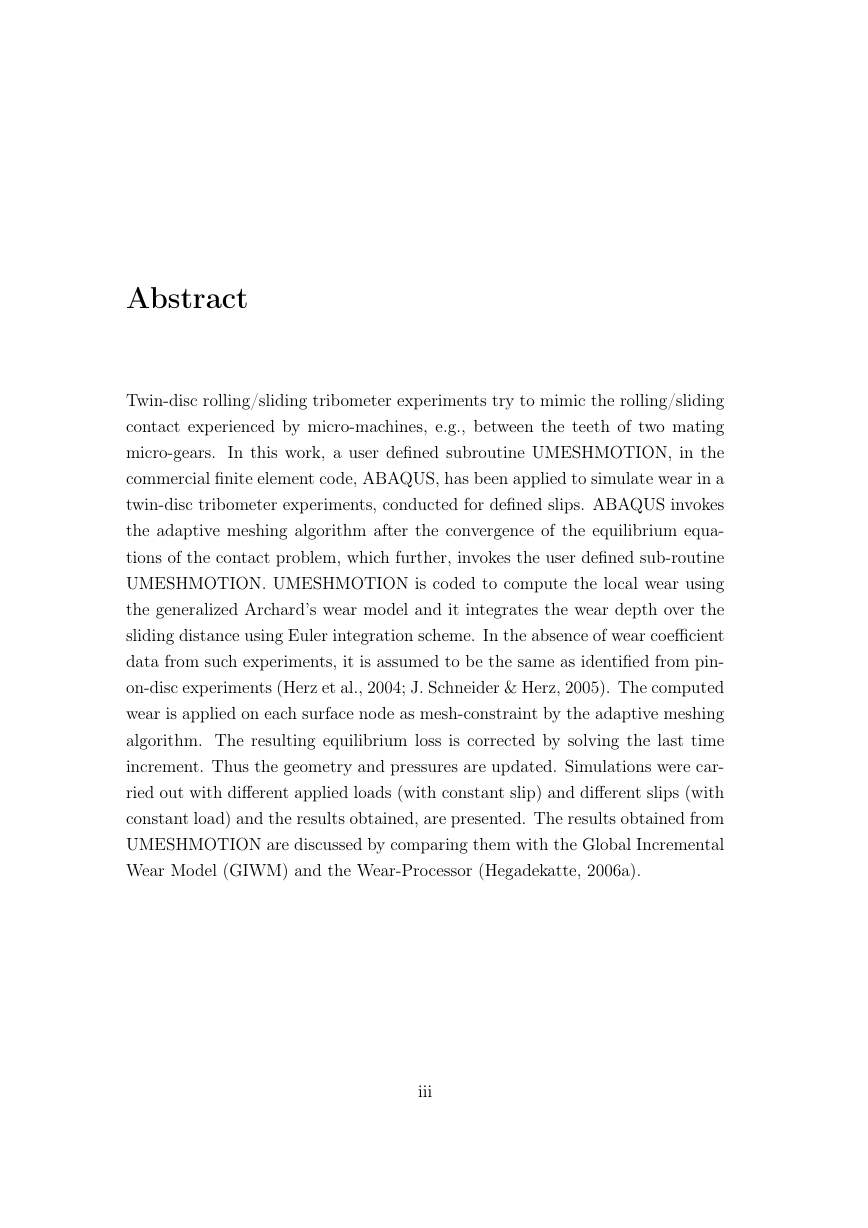

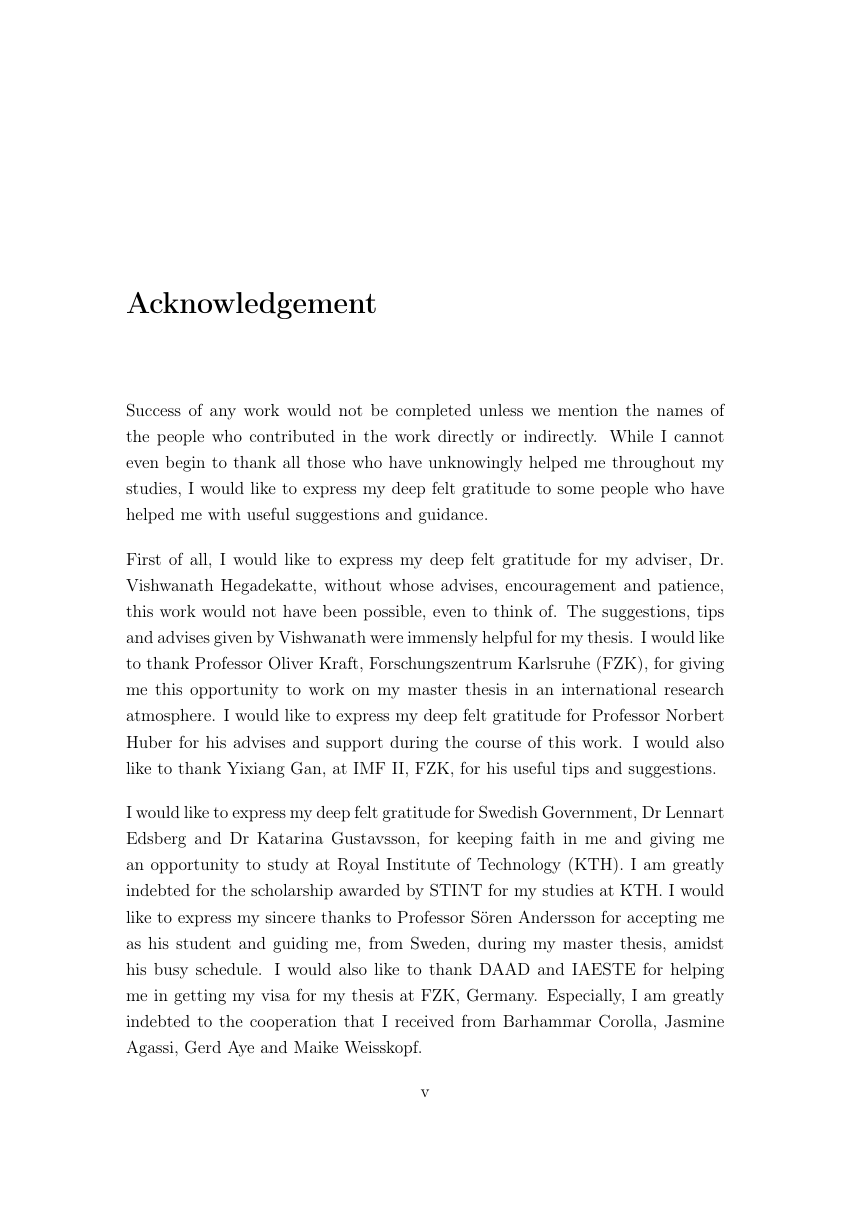
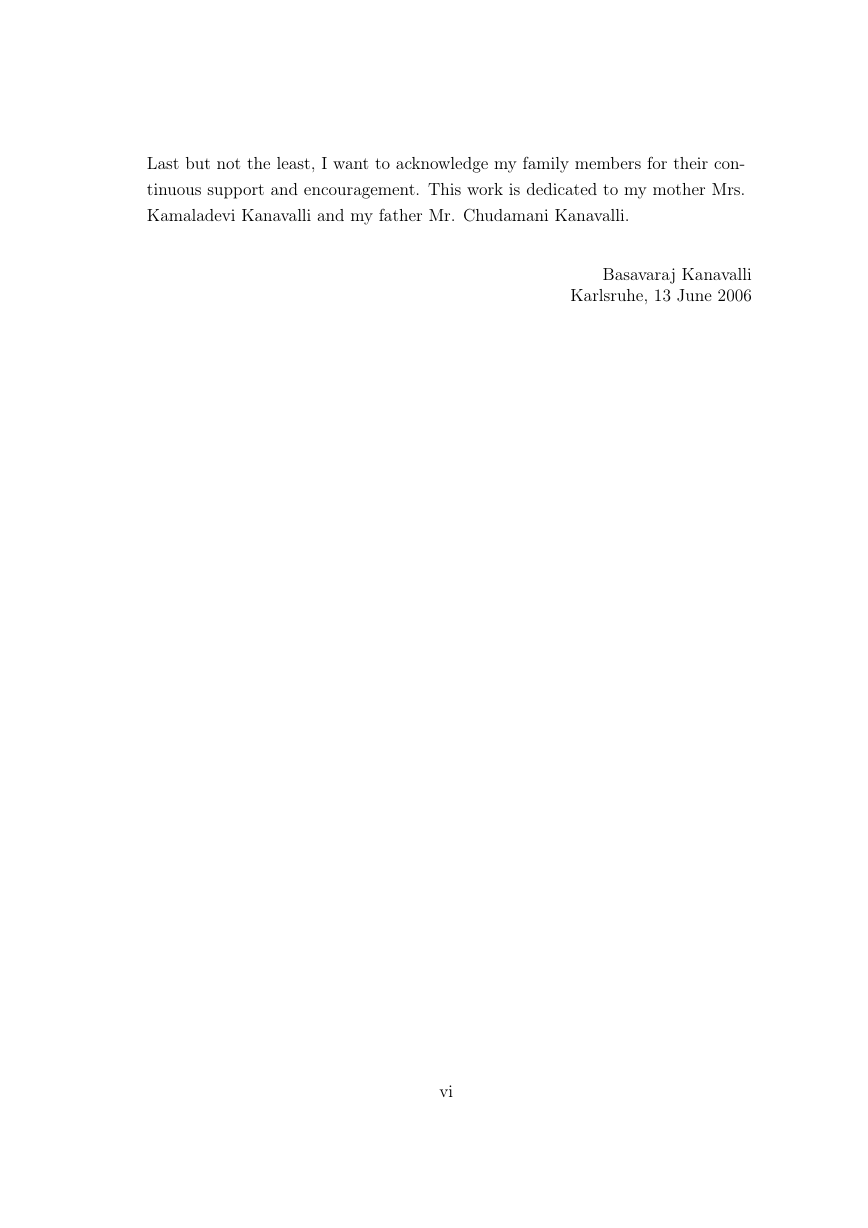
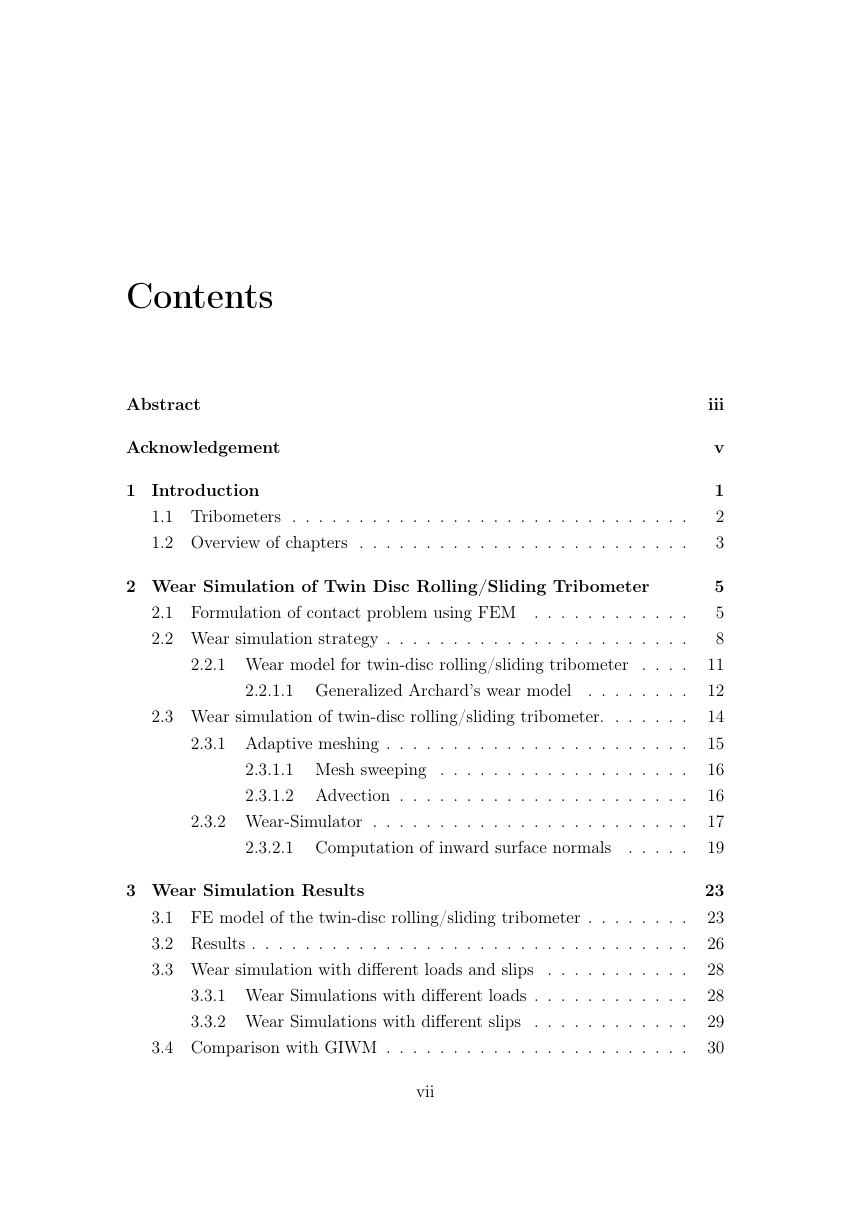
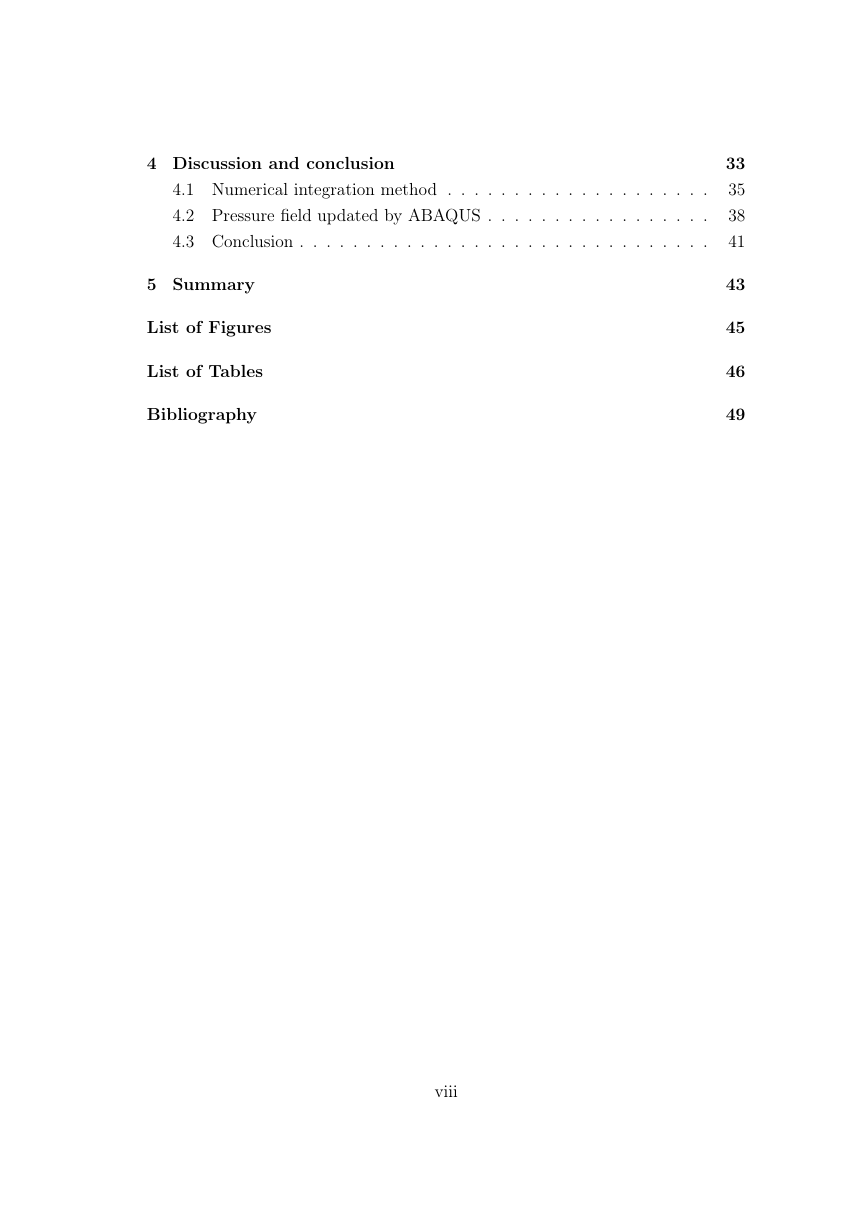








 2023年江西萍乡中考道德与法治真题及答案.doc
2023年江西萍乡中考道德与法治真题及答案.doc 2012年重庆南川中考生物真题及答案.doc
2012年重庆南川中考生物真题及答案.doc 2013年江西师范大学地理学综合及文艺理论基础考研真题.doc
2013年江西师范大学地理学综合及文艺理论基础考研真题.doc 2020年四川甘孜小升初语文真题及答案I卷.doc
2020年四川甘孜小升初语文真题及答案I卷.doc 2020年注册岩土工程师专业基础考试真题及答案.doc
2020年注册岩土工程师专业基础考试真题及答案.doc 2023-2024学年福建省厦门市九年级上学期数学月考试题及答案.doc
2023-2024学年福建省厦门市九年级上学期数学月考试题及答案.doc 2021-2022学年辽宁省沈阳市大东区九年级上学期语文期末试题及答案.doc
2021-2022学年辽宁省沈阳市大东区九年级上学期语文期末试题及答案.doc 2022-2023学年北京东城区初三第一学期物理期末试卷及答案.doc
2022-2023学年北京东城区初三第一学期物理期末试卷及答案.doc 2018上半年江西教师资格初中地理学科知识与教学能力真题及答案.doc
2018上半年江西教师资格初中地理学科知识与教学能力真题及答案.doc 2012年河北国家公务员申论考试真题及答案-省级.doc
2012年河北国家公务员申论考试真题及答案-省级.doc 2020-2021学年江苏省扬州市江都区邵樊片九年级上学期数学第一次质量检测试题及答案.doc
2020-2021学年江苏省扬州市江都区邵樊片九年级上学期数学第一次质量检测试题及答案.doc 2022下半年黑龙江教师资格证中学综合素质真题及答案.doc
2022下半年黑龙江教师资格证中学综合素质真题及答案.doc